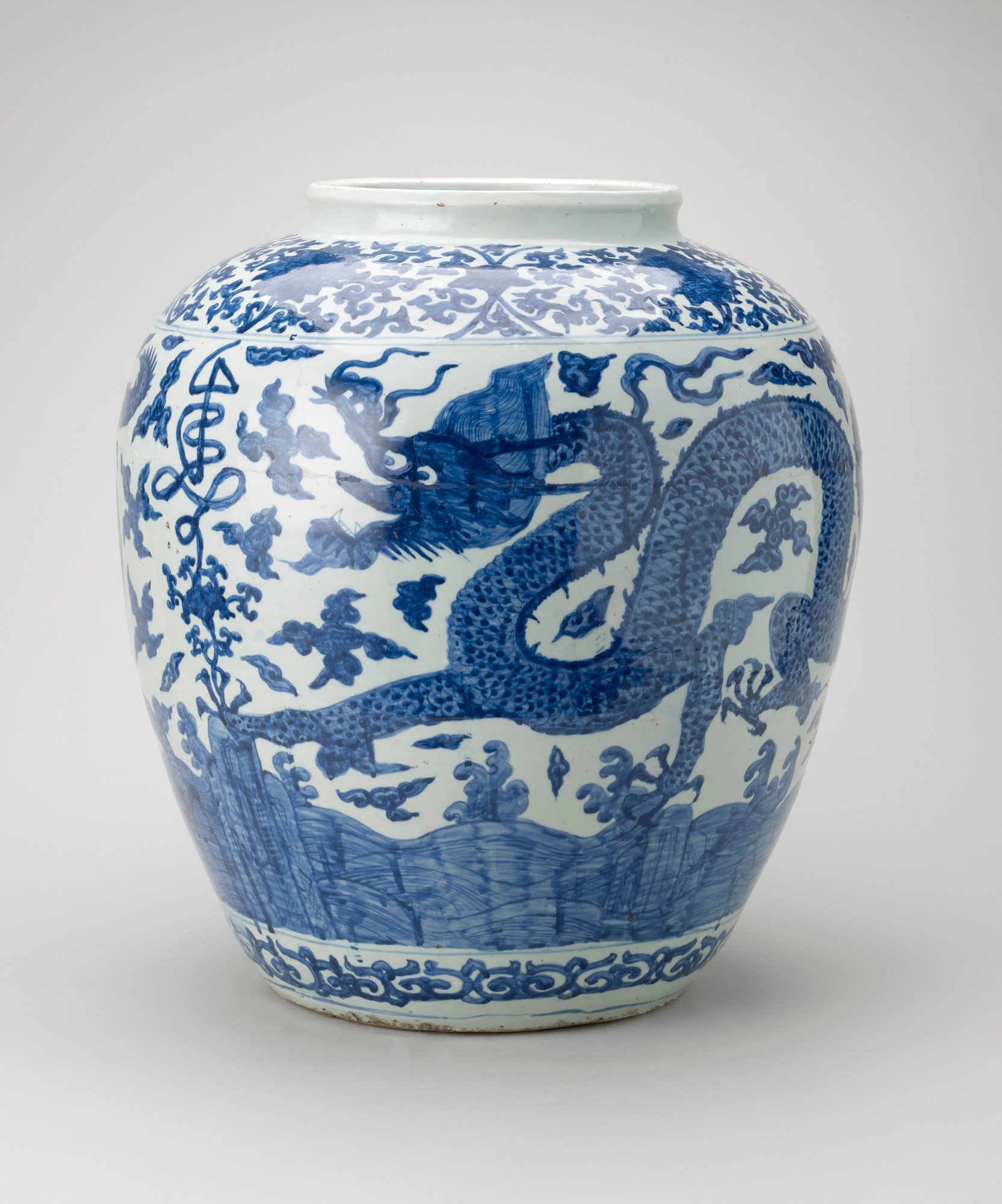
East Meets West
Extraordinary Chinese and Japanese Works of Art in the Royal Collection
Cistern with mounts
mid-18th century, mount: 1775-99RCIN 64062
The idea of adding metal mounts to Chinese porcelain may have been influenced by the existence of richly mounted pieces made from other precious materials, such as rock crystal and amber. George IV (1762–1830) was an enthusiastic collector of mounted Asian porcelain and often had gilt-bronze mounts added to wares if they did not have them already. The metal fixtures harmonised Eastern goods with the gilded interiors of nineteenth-century royal residences and in many cases transformed their function – adapting them into ewers, pot pourri jars or candelabra.
This magnificent Chinese vase was purchased for George, Prince of Wales's private residence, Carlton House, which he lavishly decorated in the Chinese and Japanese style. The mounts were probably added by Pierre-Philippe Thomire, who was the leading Parisian caster and gilder of the early nineteenth century. He was frequently employed by Napoleon and supplied high-quality mounts to leading Parisian furniture-makers as well as to the renowned Sèvres porcelain factory.







